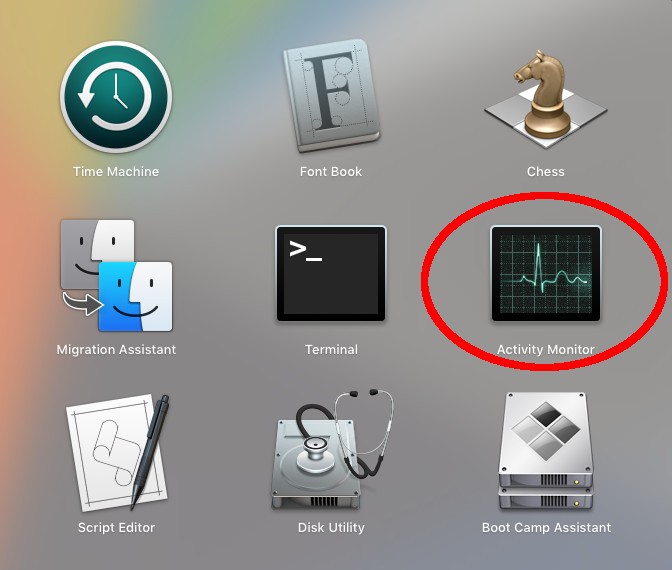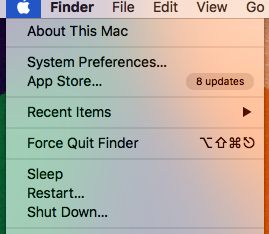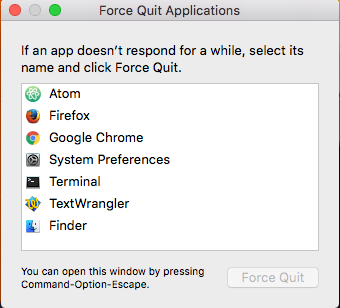3 troubleshooting shortcuts I teach every Mac user
June 28, 2017
By Kim Komando
Macs are known to be stable machines but there are times hung applications and open processes in the background may be clogging up your system. Before calling your go-to IT guy for help, there are basic actions you could do to solve the problem.Here are three basic troubleshooting secrets I teach every Mac user if their machine is not acting the way it should.
1. View Open Processes with Activity Monitor
 Sometimes, an application or process may be eating too much of your computer resources, slowing down your machine to a crawl.To view open processes and computer resources usage, use the Activity Monitor.To quickest way to access the Activity Monitor is by using Spotlight Search. Click the magnifying glass on the right side of the menu bar at the top of your screen, or press Command + Spacebar to open a Spotlight window and start typing the first few letters to auto-complete “Activity Monitor”. Just press enter to access the tool.Another way of accessing the Activity Monitor is through the Launchpad. The Activity Monitor is in the “Other” folder. Optionally, you could then drag its icon to the dock for easy access in the future.Similar to Window’s Task Manager, Mac’s Activity Monitor displays a list of all your open processes with tabs for CPU, Threads, Idle Wake Ups and Network usage.
Sometimes, an application or process may be eating too much of your computer resources, slowing down your machine to a crawl.To view open processes and computer resources usage, use the Activity Monitor.To quickest way to access the Activity Monitor is by using Spotlight Search. Click the magnifying glass on the right side of the menu bar at the top of your screen, or press Command + Spacebar to open a Spotlight window and start typing the first few letters to auto-complete “Activity Monitor”. Just press enter to access the tool.Another way of accessing the Activity Monitor is through the Launchpad. The Activity Monitor is in the “Other” folder. Optionally, you could then drag its icon to the dock for easy access in the future.Similar to Window’s Task Manager, Mac’s Activity Monitor displays a list of all your open processes with tabs for CPU, Threads, Idle Wake Ups and Network usage.
2. Force Quit

 To close any errant applications or applications that are not responding, you will have to Force Quit them.To force quit open applications, click on the Apple logo on the top left side of the menu bar, then click on “Force Quit”. This will show a window of all the open applications currently running on your Mac. Highlight one from the list then click the Force Quit button to close that particular application.Alternatively, you could use the keyboard shortcut Command + Option + Escape to open the “Force Quit” window.
To close any errant applications or applications that are not responding, you will have to Force Quit them.To force quit open applications, click on the Apple logo on the top left side of the menu bar, then click on “Force Quit”. This will show a window of all the open applications currently running on your Mac. Highlight one from the list then click the Force Quit button to close that particular application.Alternatively, you could use the keyboard shortcut Command + Option + Escape to open the “Force Quit” window.
3. Take a Screenshot
If you want to send a screenshot of a specific error for your IT support guy to review, Mac has a quick shortcut for that.Press Command + Shift + 4 and a reticle will appear. Click and drag the reticle over the area you want a screenshot of, then release. This will save and send the screenshot image directly to your desktop.To quit screenshot mode without capturing an image, just press Esc.I hope these three basic tips will help you out!
More from Komando.com
One huge mistake that’s killing your phone’s batteryGet iOS 11 before everyone else – Here’s how!3 reasons to buy Apple’s HomePod (and 2 reasons to pass)
https://www.komando.com/news/3-troubleshooting-shortcuts-i-teach-every-mac-user/